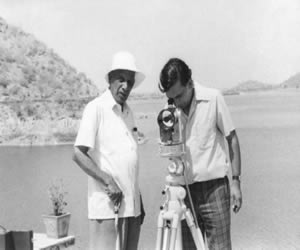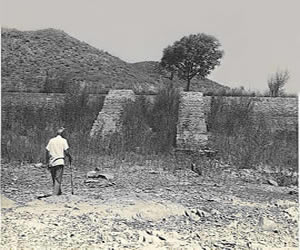|
As the prime objective of USO is to obtain high spatial resolution observations of the Sun, a site survey was initiated in early 1973 to search for a suitable site in the western Rajasthan, as this region receives maximum sunshine in India. From the observations by Evershed in 1915 in the Kashmir valley from an island, Aerospace Corporation's San Fernando Observatory near a lake and the Big Bear Solar Observatory located in the middle of a big lake, it is now well established that a large body of water helps to stabilize the air mass near the surface to yield high resolution solar observations. From these observations, the main criterion was to look for suitable lake sites in western Rajasthan. Four lakes near Udaipur and one near Jodhpur were considered for a preliminary survey. In view of the available space for the observatory, constant water level and logistic considerations, Jai Samand and Fatehsagar lakes were considered for detail site survey. Visual observations of solar seeing through a 3-inch Questar telescope and microthermal measurements were made on sample days in all seasons, except in the monsoon months of July, August and September, during 1973-74. The solar seeing observations made near the Jai Samand lake and those made from a small island near the north shore of the Fatehsagar lake, compared fairly well. Finally , the site in the Fatehsager lake was selected in view of the longer hours of stable and good seeing available as compared to Jai Samand site. Further, the logistic advantages of Fatehsagar lake favoured the establishment of the Solar Observatory at the present location.
|
|
Prof. K.R. Ramanathan at the Lake Fatehsagar site
|
|
Udaipur Solar Observatory ( USO )
subglobal1 link | subglobal1 link | subglobal1 link | subglobal1 link | subglobal1 link | subglobal1 link | subglobal1 link
subglobal2 link | subglobal2 link | subglobal2 link | subglobal2 link | subglobal2 link | subglobal2 link | subglobal2 link
subglobal3 link | subglobal3 link | subglobal3 link | subglobal3 link | subglobal3 link | subglobal3 link | subglobal3 link
subglobal4 link | subglobal4 link | subglobal4 link | subglobal4 link | subglobal4 link | subglobal4 link | subglobal4 link
subglobal5 link | subglobal5 link | subglobal5 link | subglobal5 link | subglobal5 link | subglobal5 link | subglobal5 link
subglobal6 link | subglobal6 link | subglobal6 link | subglobal6 link | subglobal6 link | subglobal6 link | subglobal6 link

